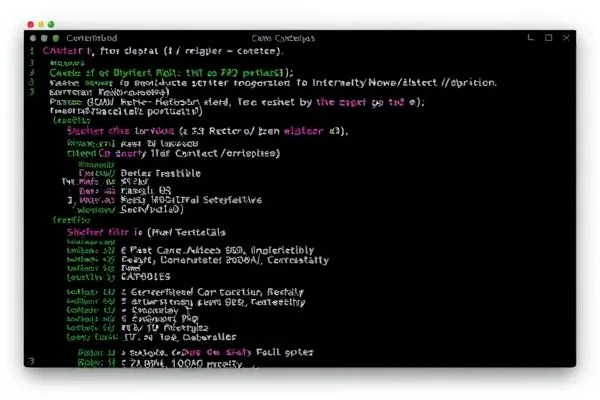PowerModul Implant: An Emerging Cyber Threat to Russian Industries
The rapid evolution of cyber threats necessitates constant vigilance and adaptation. Among these threats, the group known as Paper Werewolf has been actively targeting Russian sectors with their sophisticated PowerModul implant. This article explores the intricacies of these cyberattacks, their implications for critical industries, and the recommended defenses to mitigate risk.
- Paper Werewolf focuses on Russian critical sectors, leading to substantial data breaches.
- PowerModul enables advanced attack chains for persistent access to compromised systems.
- Employee awareness is essential to thwart initial phishing attempts.
- Regular cybersecurity audits can identify vulnerabilities before exploitation.
Target Areas of Paper Werewolf Cyberattacks
Paper Werewolf has strategically pinpointed its attacks on Russian sectors vital to national interest, including mass media, telecommunications, government, and energy. The attack vector employed includes:
- Phishing Schemes: Initiating attacks with deceptive emails containing macro-laden documents that lead to malware installation once the recipient activates macros.
- PowerRAT Deployment: Utilizing PowerShell scripts for establishing remote access and deploying further malware payloads to maintain control over the victim’s system.
- Credential Harvesting: Exploiting platforms like Microsoft Outlook to extract credentials through malicious IIS modules.
Such a multi-faceted strategy necessitates comprehensive security measures to reduce vulnerability.
Understanding PowerModul’s Functionality
PowerModul has been engineered to facilitate a wide range of malicious operations:
- C2 Interaction: Establishes a two-way communication channel with its Command and Control (C2) server, allowing the dynamic deployment of additional malware.
- Data Exfiltration Tools: Incorporates utilities like FlashFileGrabber for stealing data from removable media, enhancing the threat profile significantly.
- Privilege Escalation Techniques: Uses tools such as PsExec to gain higher permissions within the target environment, exacerbating the threat to organizational security.
The implications of such capabilities call for proactive cybersecurity measures throughout organizations operating in affected sectors.
Implementing Defense Strategies
In light of these sophisticated attack methods, organizations must adopt proactive cybersecurity practices:
- Security Awareness Training: Regular employee training on the dangers of phishing and suspicious emails is crucial.
- Robust Email Filters: Implement advanced filtering to reduce the chances of phishing emails reaching users’ inboxes.
- Frequent Security Audits: Regularly check for vulnerabilities that could potentially be exploited by attackers.
By reinforcing these defenses, organizations can better protect their digital assets and sensitive information from threats like Paper Werewolf.
FAQs
- What defines the Paper Werewolf group? Paper Werewolf is a cyber threat actor known for targeting specific industries in Russia using advanced malware like PowerModul.
- How does PowerModul facilitate attacks? PowerModul functions as a backdoor, enabling attackers to execute arbitrary scripts and maintain persistence within compromised systems.
- Which sectors should be wary of Paper Werewolf? The group targets critical sectors, including government, telecommunications, and energy, posing significant risks to organizational security.
- What defenses are necessary against these threats? A combination of employee training, improved email security, and regular system evaluations is required to fend off these cyber threats.









